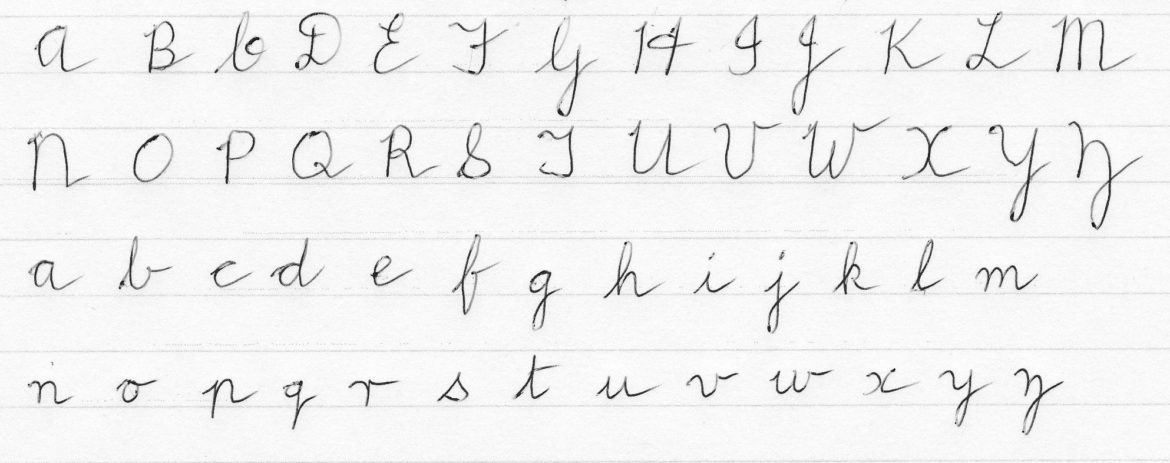Capital Letters and Small Letters
English is a peculiar language. It is amazing how English has become so popular throughout the world in spite of not having its own script. Yes. English doesn’t have its own script and it uses Roman Script. It is like writing Hindi in Kannada letters.
In addition, unlike our Indian scripts, English has uppercase letters and lowercase letters. While uppercase letters are called capital letters the lowercase are also known as small letters. English did not always use capital and small letters. In the 3rd century BCE (Before Common Era or Anno Domini AD) English writings had only capital letters. It is only in the 9th century BCE that we see the use of small letters in English.
During those days there was no printing press. People used to write all the books by hand. To make their writing beautiful they used a mixture of capital and small letter. The capital letters were used for the first letter of the sentence. The capital letter suggested the beginning of new thought while the ‘full stop’ suggested the completion of the thought.
Appropriate use of capital letters not only reduces the strain on the brain but also makes the writing, easy to read and comprehend. For example, read the following sentences and find out which is more strenuous.
While all small letters are monotonous and boring, all capital letters are a strain on the eyes and the brain. They also indicate emphasis and are used when we want to communicate anger and shouting. Therefore it is essential to know when to use capital letters.
All proper nouns are capitalized. We need to know the difference between a proper noun and a common noun. Common nouns are common names example dog, cat, man, boy, girl, country, city, vehicle etc. Proper nouns are the names of particular dogs, boy, girl, country, vehicle, things. Example Jockey, Katty, Rakshit, Ramya, Sri Lanka, Honda City, Sony Xperia etc.
Name of persons are capitalized
Common noun – boy – any boy
Proper noun – Vinay – a particular boy, the son of Mr Srinivas Rao
Names of the animals are capitalized
Common noun – dog – any dog
Proper noun – Jockey – the dog in Vidyanjali
Names of the vehicles capitalized
Common noun – car – any car
Proper noun – Maruti Alto – a particular model
Names of the things are capitalized
Common noun – mobile phone
Proper noun – Nokia Lumia
Names of books are capitalized
Common noun – book – any book
Proper Noun – Jungle Book – the book written by Rudyard Kipling
Names of the movies are capitalized
Common noun – movie – any movie
Proper noun – Harry Potter and Sorcerer’s Stone – the name of the movie directed by Chris Columbus
Nationalities, ethnic groups and languages are capitalized
Brazilian – names of the people are capitalized
Hindi – the name of the languages are capitalized
Kurubas – ethnic groups are capitalized
Names of days and months of a year are capitalized
Tuesday – the name of a particular day
August – the name of a particular month
Names of continents, countries, states, cities and streets are capitalized
Africa, Nepal, Texas, Rome, Infantry Road
The word ‘I’ is always capitalized.
The girl said, ‘I am Shruthi, the daughter of Lokesh Reddy.’
Geographic locations, like the names of mountains and rivers, are capitalized.
Kanchan Junga, River Yamuna.
Names of all brands, titles, events and structures are capitalized.
Colgate, Inspiro – 2013, Eiffel Tower, World War II, Japanese
The names of holidays are capitalized.
Mother’s Day, Republic Day
References to the supreme god are capitalized.
God, Allah, Prophet, Buddha, Muslim, Hindu
Names of religious works are capitalized
Bible, Quran, Bhagavatha, Bhagavad Gita etc.
When we DO NOT use capital letters
The academic years are not capitalized
freshman, junior, or senior
The names of decades or centuries are not capitalized.
twenties, thirties
Some more rules of capitalization
If the word ‘the’ preceding the name of the organization and is part of an organization’s legal name it should be capitalized. Example:
The Times of India
the Deccan Herald
The official titles of honour and respect have to be capitalized. On the other hand, do not capitalize a title when the personal name follows the title. Example:
These are a few of the rules of capitalization that we follow in our day-to-day writings. Appropriate and effective use of capital letters not only increases the readability but also makes the writing beautiful.

